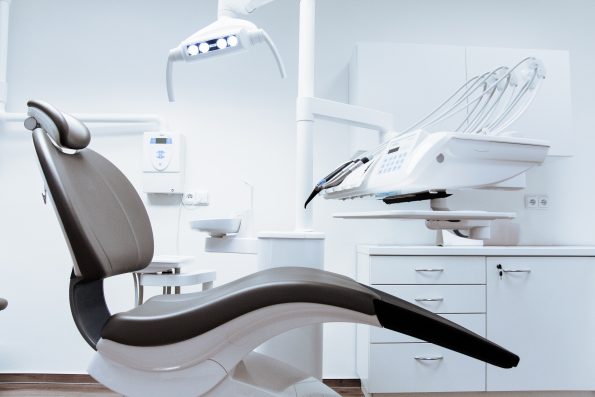The Startup Magazine 5 Tips for Starting a Pediatric Orthodontic Practice in a Rural Area

Starting a pediatric orthodontic practice in a rural area can be both rewarding and challenging. Here are five practical tips to help you navigate the unique obstacles of a rural pediatric orthodontic practice and seize the opportunities that come with practicing in rural settings.

Assessing Community Needs
All orthodontists are trained dentists, but only 5% of dentists are also orthodontists. Before setting up your practice, it is crucial to assess the community’s needs to determine if there is a sufficient demand for pediatric orthodontic services. Conducting surveys, meeting with local healthcare providers, and analyzing demographic data can help you understand the specific requirements of the community. By identifying the unique orthodontic needs of the local population, you can tailor your services effectively.
Understanding the community’s needs can also guide you in making informed decisions about the services you offer. In rural areas, access to specialized orthodontic care may be limited, making your services even more valuable to residents. Additionally, assessing community needs can help you determine the appropriate pricing structure and payment plans to make your services accessible to a wider range of families.
Securing Adequate Funding
Securing adequate funding is a crucial step in establishing a pediatric orthodontic practice. Start by developing a comprehensive business plan that outlines your goals, target market, and financial projections. This plan will not only guide your business decisions but also serve as a valuable tool when seeking loans or investments from financial institutions. There are several sources of funding to consider, including bank loans, private investors, and government grants. Rural development grants may be available specifically for healthcare practices, providing financial assistance tailored to your unique needs.
Additionally, consulting with financial advisors can help you identify the best funding options and develop a sustainable financial strategy. Proper financial management is essential for the long-term success of your practice. Develop a detailed budget that accounts for all expenses, including equipment, staff salaries, and marketing efforts. By securing adequate funding and managing your finances effectively, you can ensure that your practice is well-equipped to serve the community and grow over time.
Building a Referral Network
Building a robust referral network is essential for the success of your pediatric orthodontic practice. Establishing strong relationships with local healthcare providers, including general dentists and pediatricians, can help you attract a steady stream of patients. By collaborating with these professionals, you can ensure that children in the community receive timely and appropriate orthodontic care. Consider hosting informational sessions or workshops to educate local healthcare providers about the benefits of early orthodontic intervention. These events can help you build credibility and trust within the medical community, leading to more referrals.
Additionally, providing excellent care and maintaining open communication with referring providers can strengthen these relationships and encourage ongoing support. Also, between 25% and 50% of children require orthodontic care, making it crucial to have a reliable referral network. By working closely with local healthcare providers, you can ensure that children in the community have access to the orthodontic services they need. Building a referral network is not just about attracting patients; it’s about fostering a collaborative approach to healthcare that benefits the entire community.
Acquiring the Right Equipment
Acquiring the right equipment is vital for providing high-quality orthodontic care. Investing in state-of-the-art technology can enhance the efficiency and effectiveness of your treatments. From digital X-ray machines to 3D imaging systems, having the latest equipment can set your practice apart and improve patient outcomes. Consider working with reputable suppliers to ensure that your equipment meets industry standards and is reliable. Additionally, factor in the costs of maintenance and upgrades when planning your budget. High-quality equipment not only improves the quality of care but also enhances the patient experience, leading to higher satisfaction and retention rates.
Investing in the right equipment is a significant financial commitment, but it’s essential for the long-term success of your practice. Advanced technology can streamline your workflow, reduce treatment times, and improve diagnostic accuracy. By prioritizing the acquisition of high-quality equipment, you can ensure that your practice is well-equipped to meet the demands of pediatric orthodontic care in a rural setting.
Hiring and Training Staff
Hiring and training the right staff is crucial for the smooth operation of your pediatric orthodontic practice. A well-trained team can enhance patient care, improve efficiency, and create a positive work environment. When hiring, look for candidates with relevant experience and a passion for working with children. Provide comprehensive training to ensure that your staff is well-versed in the latest orthodontic techniques and patient care protocols. Ongoing professional development opportunities can help your team stay updated on industry advancements and maintain high standards of care.
Fostering a supportive work environment can boost staff morale and retention rates, too. Since children should have their first orthodontic evaluation by age seven, it is essential for your staff to be skilled in pediatric care! Training your team to handle the unique needs of young patients can enhance the overall patient experience and build trust with families. A well-trained and dedicated staff is a cornerstone of a successful pediatric orthodontic practice.
Starting a pediatric orthodontic practice in a rural area requires strategic planning and a deep understanding of the local community. Embracing these tips will help you create a rural pediatric orthodontic practice that meets the unique needs of rural populations and provides exceptional care to children in the community.
